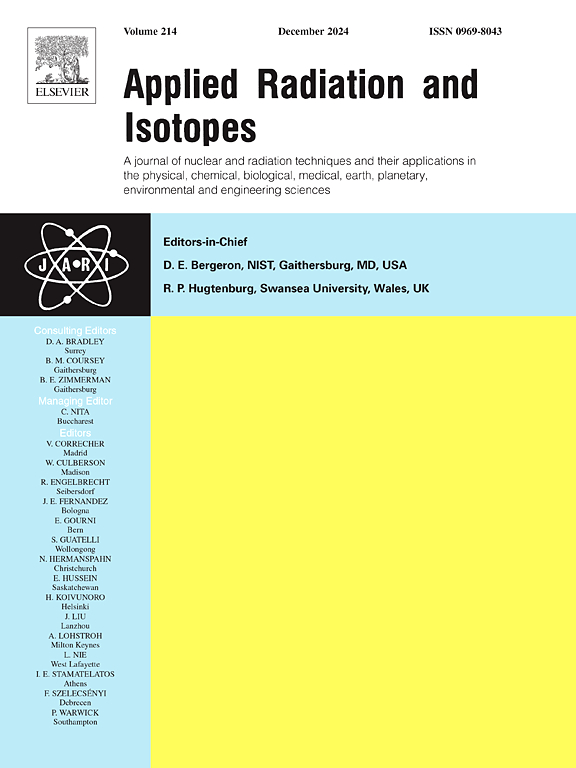在核废料特征描述和土地修复中使用总α和β筛选的挑战。
IF 1.6
3区 工程技术
Q3 CHEMISTRY, INORGANIC & NUCLEAR
引用次数: 0
摘要
总阿尔法和贝塔测量是一种广泛使用的快速筛选放射性核素含量的技术。这项研究评估了几何形状、阿尔法和贝塔能量以及天然衰变链核素的存在对观测到的阿尔法和贝塔总响应的影响。利用基于蒙特卡洛的建模对测量的校准数据进行了验证。对一系列核废料指纹的总放射性活度和计算放射性活度进行了比较,发现许多被评估的指纹存在显著偏差。对于暴露于操作环境中的材料,观察到系统性的贝塔偏差取决于存在的主要核素。本文章由计算机程序翻译,如有差异,请以英文原文为准。
Challenges in the use of gross alpha and beta screening in nuclear waste characterisation and land remediation
Gross alpha & beta measurement is a widely used technique for rapid screening of radionuclide content. The study evaluated the influence of geometry, alpha & beta energy and presence of natural decay chain nuclides on the observed gross alpha & beta response. Measured calibration data were validated using Monte Carlo-based modelling. Total and calculated gross activities were compared for a range of nuclear waste fingerprints, with significant deviation observed for many of the fingerprints evaluated. For operationally-exposed materials, systematic beta biases were observed dependent on the dominant nuclide present.
求助全文
通过发布文献求助,成功后即可免费获取论文全文。
去求助
来源期刊

Applied Radiation and Isotopes
工程技术-核科学技术
CiteScore
3.00
自引率
12.50%
发文量
406
审稿时长
13.5 months
期刊介绍:
Applied Radiation and Isotopes provides a high quality medium for the publication of substantial, original and scientific and technological papers on the development and peaceful application of nuclear, radiation and radionuclide techniques in chemistry, physics, biochemistry, biology, medicine, security, engineering and in the earth, planetary and environmental sciences, all including dosimetry. Nuclear techniques are defined in the broadest sense and both experimental and theoretical papers are welcome. They include the development and use of α- and β-particles, X-rays and γ-rays, neutrons and other nuclear particles and radiations from all sources, including radionuclides, synchrotron sources, cyclotrons and reactors and from the natural environment.
The journal aims to publish papers with significance to an international audience, containing substantial novelty and scientific impact. The Editors reserve the rights to reject, with or without external review, papers that do not meet these criteria.
Papers dealing with radiation processing, i.e., where radiation is used to bring about a biological, chemical or physical change in a material, should be directed to our sister journal Radiation Physics and Chemistry.
 求助内容:
求助内容: 应助结果提醒方式:
应助结果提醒方式:


